Climate Change Policy
Due to the inertia in the climate system the carbon dioxide emitted today will remain in the atmosphere for decades. It is these cumulative rather than annual emissions that are driving climate change. As the frequency of extreme climate events increases, issues of inequality and sustainable development become more acute. In order to reach the target of keeping the average global temperature rise within 2°C, it is imperative for global emissions to reach zero in the next 30-40 years, and the longer this process is delayed, the more negative emission technologies will be required in future, which as current technologies stand, are extremely expensive. Therefore, an annual rate of carbon reduction is important to meet the objectives of the Paris Agreement.
As an asset manager, Polunin Capital Partners aims to minimize risks related to climate change and maximise returns from opportunities related to energy transition, within the scope of the investment objectives. We fully support the ambition of the Paris agreement to limit global warming to below 2°C compared to pre-industrial levels. However, our chosen investment universe — Emerging Market equities — has a potential temperature increase of 4.5°C by 2050 (based on the IEA World Energy Model and ISS forecasts). Whilst our projection was made before China’s stated commitment to net-zero emissions by 2060, and we are encouraged by more countries making net-zero commitments, the challenges faced by our investment universe are enormous. Therefore, our initial target is net-zero emissions for all assets under management by 2060 or sooner. This target will be revised as we refine our analysis and implementation strategy.
The ESG & Sanctions Screening Committee oversees reporting in compliance with Task Force on Climate-related Financial Disclosure (TCFD) recommendations, and reports annually to the Board of Directors on climate related risks and opportunities. The Committee monitors changes in climate metrics and targets and works with clients to understand their climate expectations.
We assess portfolio company alignment to climate scenarios provided by the International Energy Agency (IEA), which are the Sustainable Development Scenario (SDS, Paris-aligned <2°C), the Stated Policy Scenario (STEPS), and the Current Policy Scenario (CPS); the Inevitable Policy Response Forecast Policy Scenario (IPR FPS) is under review. The Sectoral Decarbonization Approach (SDA), developed by the Science Based Targets initiative, is used for scenario alignment. It allocates each sector a carbon budget, and each company has a budget based on its revenue market share and the sector’s expected emissions trajectory. Each company is responsible for its sector emission reduction pathway to remain within a given scenario. Most sectors’ carbon budget will be based on the emission intensity-based approach (Scope 1 & 2), except utilities will use the generation-based approach (Scope 1), and fossil fuel producers will use the combustion-based approach (Scope 3).
We have also begun the process of understanding climate-related risks and opportunities.
Transition risks are associated with the transition to a low and ultimately zero carbon global economy, most commonly related to technological change, government policy development, market responses, change in consumer preferences, and reputational damage from shifting public opinion. Such changes could prompt a re-valuation of a range of assets as costs and opportunities shift.
As the largest greenhouse gas (“GHG”) emitters, coal production, power and especially coal-fired, and oil and gas sectors, have the highest climate-related risks. Although for emerging markets this is an emerging rather than a prevalent risk, shifts (whether policy, technology, investor or public expectations) towards low carbon can happen quickly. These can materially impact the valuation of those sectors due to transition risk and stranded risk associated with long-lived assets and reserves, as well as the substantial capital investment required in order to change their business models. Unconventional and controversial energy extraction such as arctic drilling, fracking, oil sands, and shale, also pose transition as well as reputation risks.
Within the industrial group, transportation accounts for the largest portion of GHG emissions from fuel combustion. With developing countries establishing their net-zero targets, governments are setting timelines to phase out the internal combustion engine as a key part of carbon reduction. This puts substantial financial risks around current vehicle production capacity, potentially causing write-offs, as well as substantial investments in research and development of new technologies and capacities which take time to ramp up and turn profitable.
Physical risks emanating from climate change can be event-driven (acute) such as increased severity of extreme weather events (e.g. tropical cyclones, floods, wildfires, heat stress, droughts). They can also relate to longer-term shifts (chronic) in precipitation and temperature and increased variability in weather patterns or other long-term changes such as sea level rise. This can be further separated into direct physical climate risk, risk of damage or impairment to assets as a result of extreme weather events and sea-level rise, and indirect physical climate risk, risk of damage or impairment to assets as a result of second- or third-order impacts of climate change, such as disruption to trade as a result of an extreme weather event or impact on food prices as a result of prolonged drought.
We model the current and 2050 portfolio Value at Risk (VaR) from climate hazards using financial data under the most likely (RCP 4.5) and worst case (RCP 8.5) scenarios per IPCC 5th Assessment. Impact on operations (capex, property, plant & equipment, expenses including salaries), and impact on sales (assume in direct proportion to climate impact on country GDP) are incorporated into an EVA model to calculate VaR on a per company level, which is then aggregated on a portfolio basis. Also we compare the portfolio’s physical risk relative to the benchmark’s average risk, by sector, and per physical risk, under the most likely scenario.
Initial analysis shows that he sectors contributing the most to physical risks are materials, information technology, and industrials. Our physical risk levels by sector are better than benchmark average, except for information technology, and portfolios are slightly more exposed to tropical cyclones, floods, and wildfires than the benchmark.
Climate-related opportunities can be found in sectors that reduce our reliance on fossil fuels such as renewable energy, and technologies that help high carbon industries cut emissions, such as electric vehicles and hydrogen fuel cells. In future, negative-emission technologies, water recycling systems that reduce usage and waste, and product innovation to reduce carbon and waste, such as bioplastics and engineered food, are likely to increase in importance. We also believe that most industries could benefit from product cycle re-engineering to become more circular.
In the coming years we shall encourage companies to report in accordance with TCFD framework, including setting a Science Based Target, conducting scenario analysis, and considering physical risks and adaptation measures.
Our investment objective is to effect change in traditional industries and encourage innovation, rather than excluding carbon intensive sectors for the sake of meeting reduction target. We will however engage with investee companies to request coal exit plans by 2040 worldwide (and by 2030 in OECD countries). Also we aim to collectively engage with regulators and policy makers in future, who can influence societal change, and incentivise corporate behaviour and investment.

